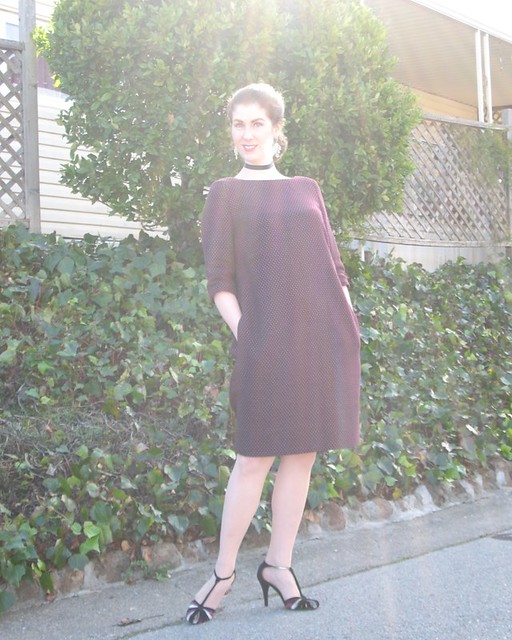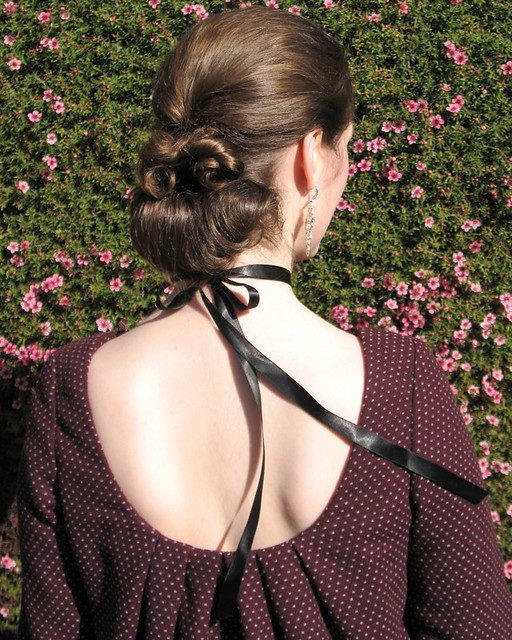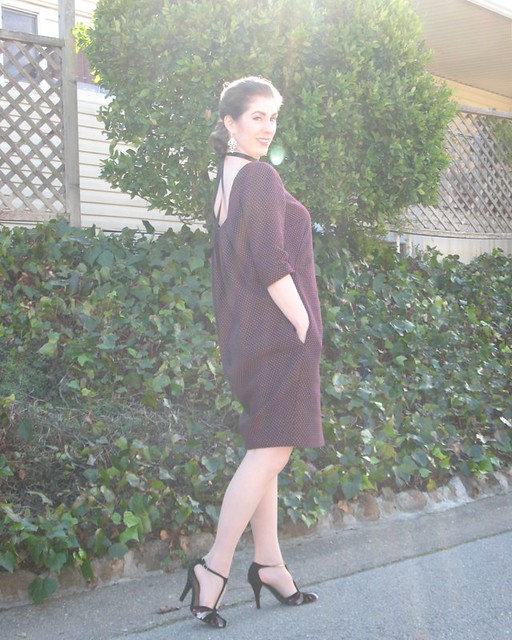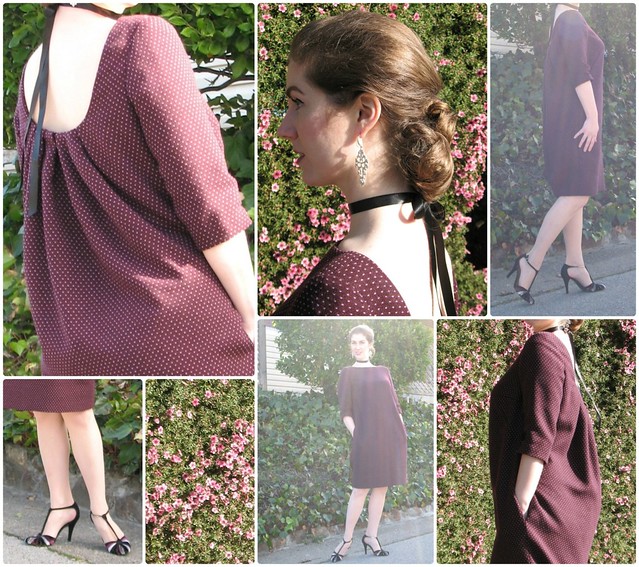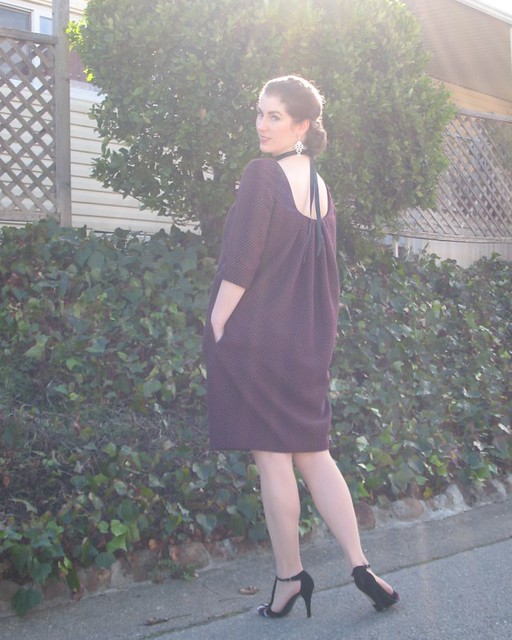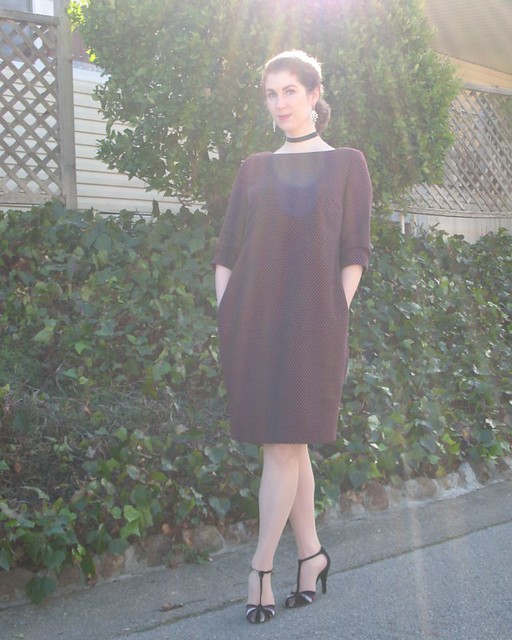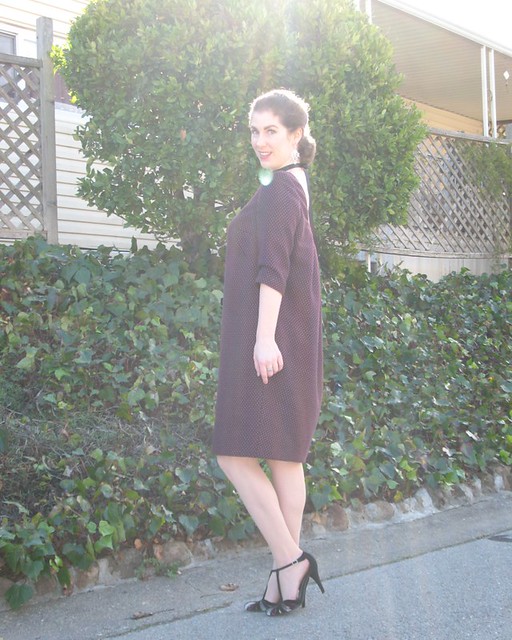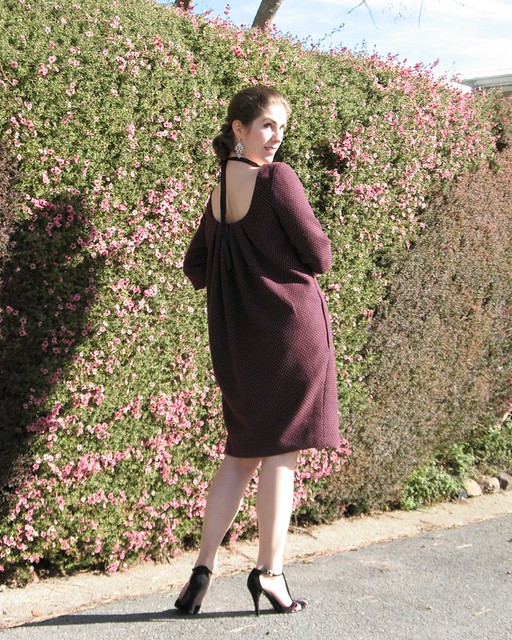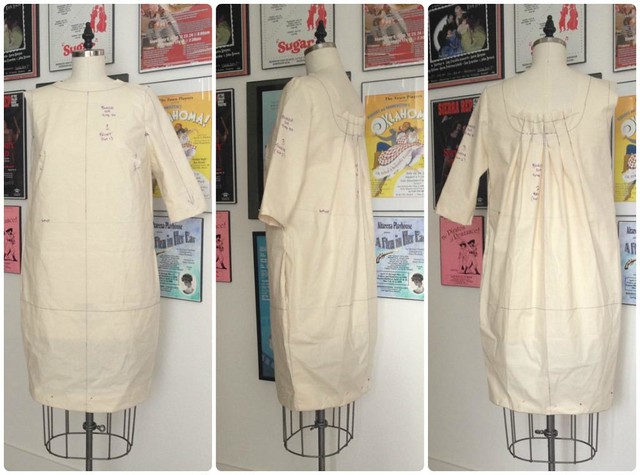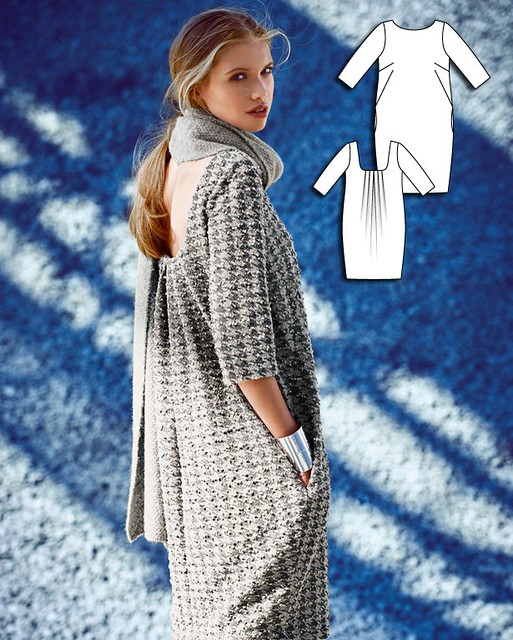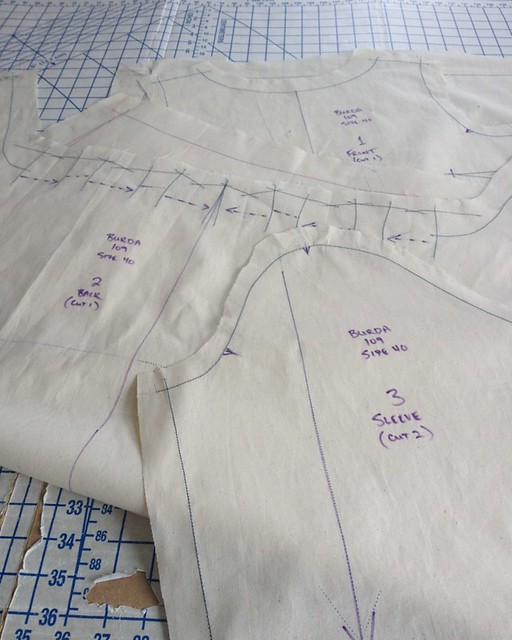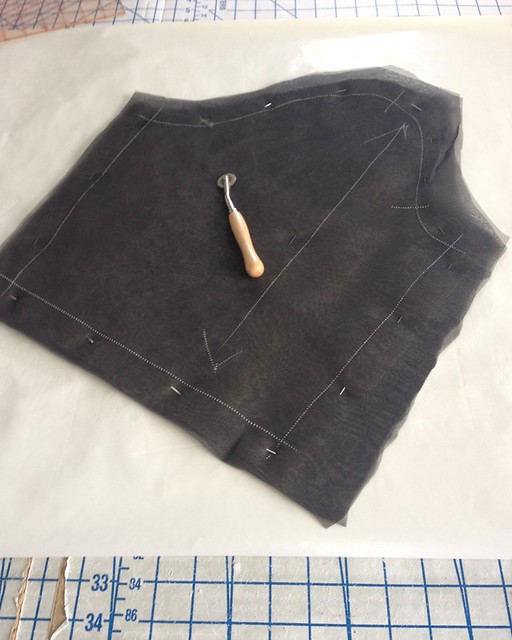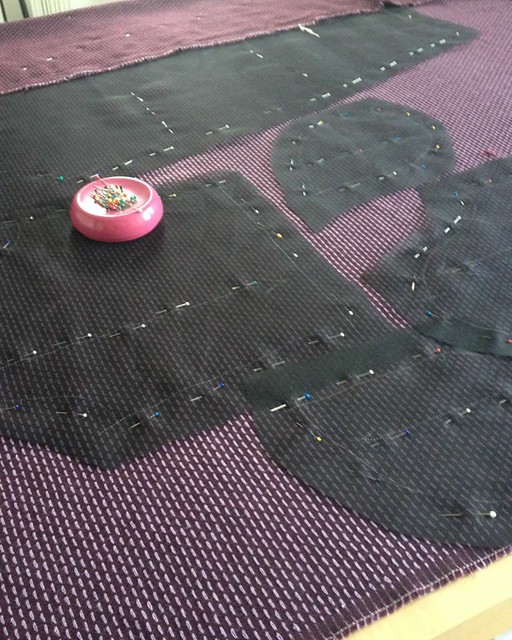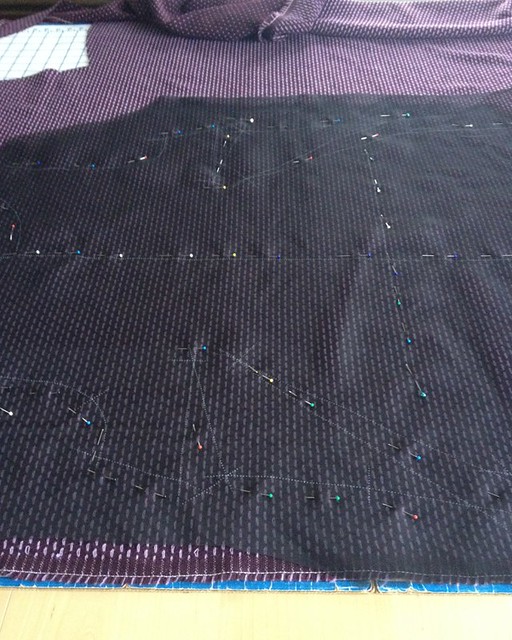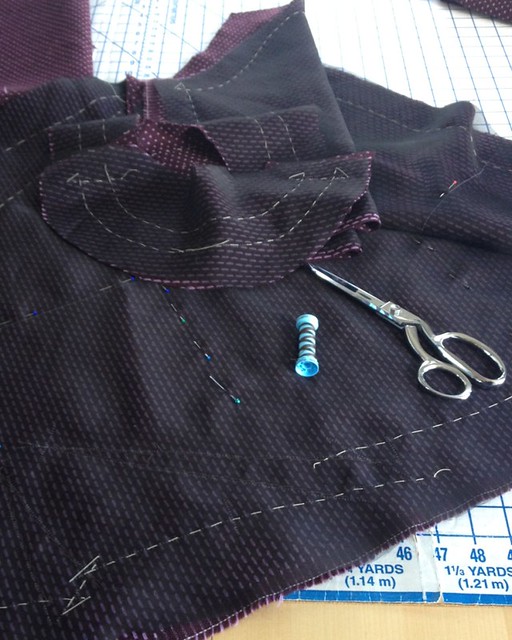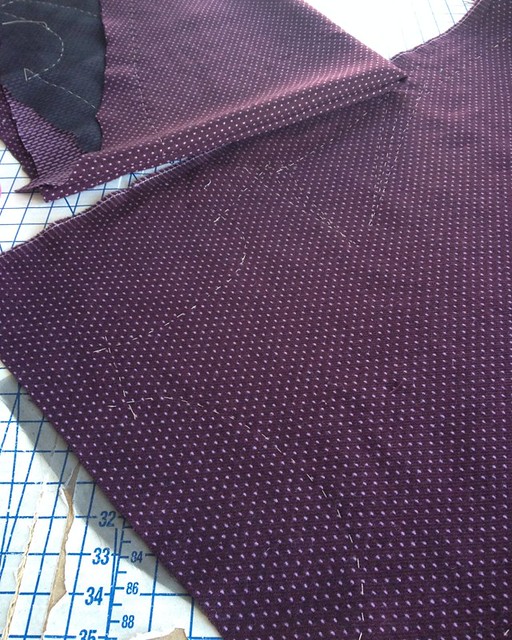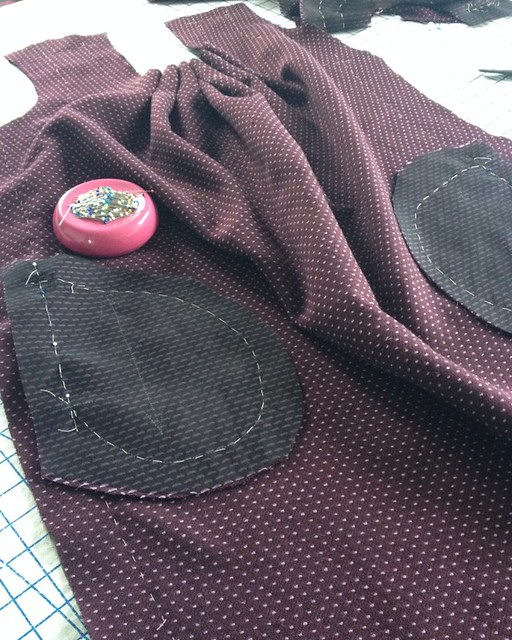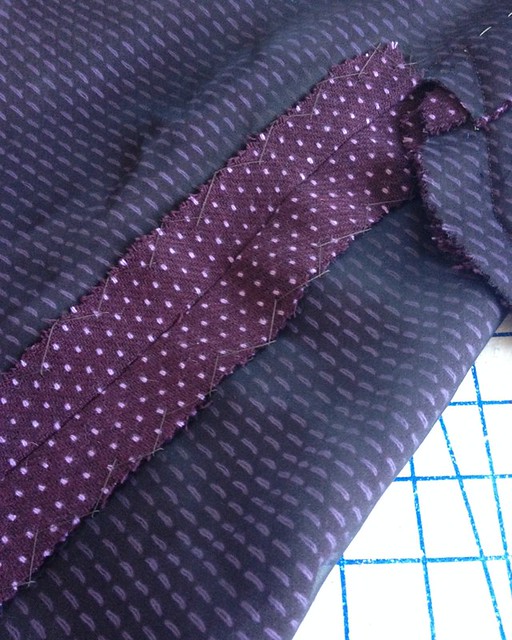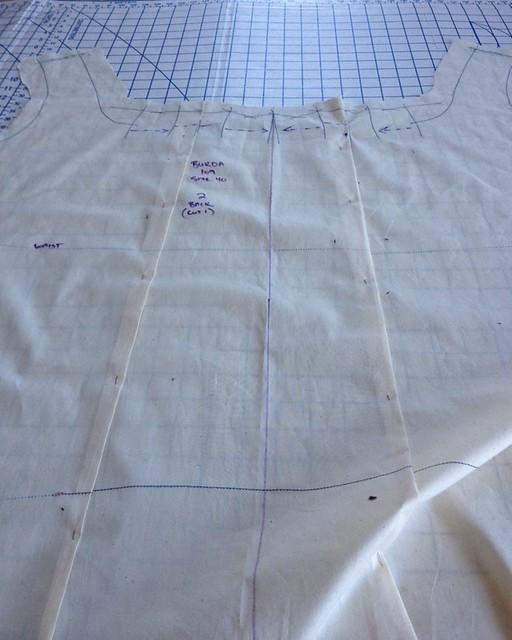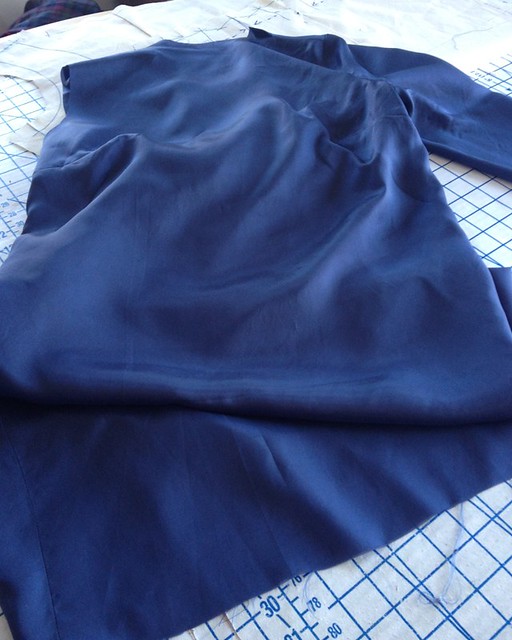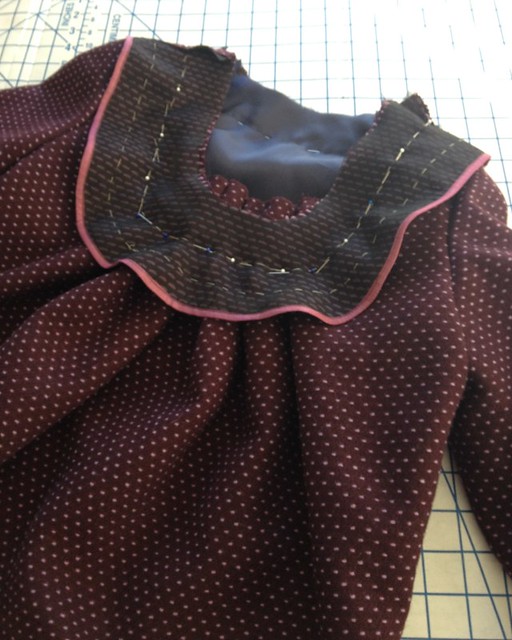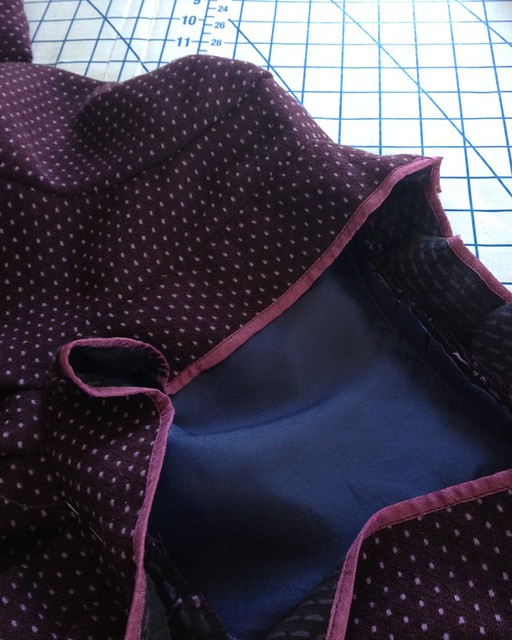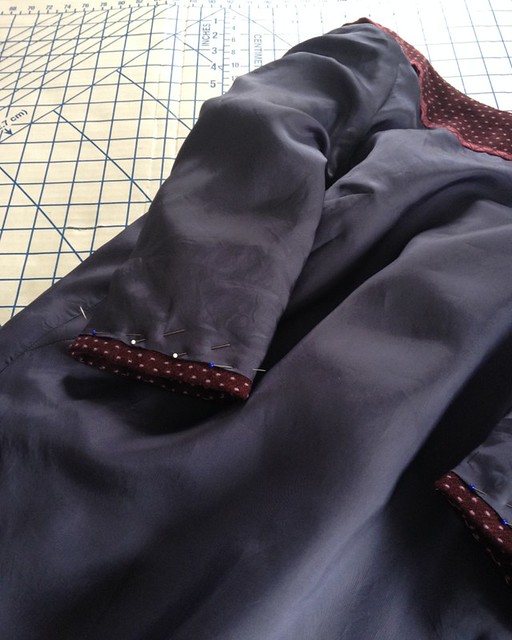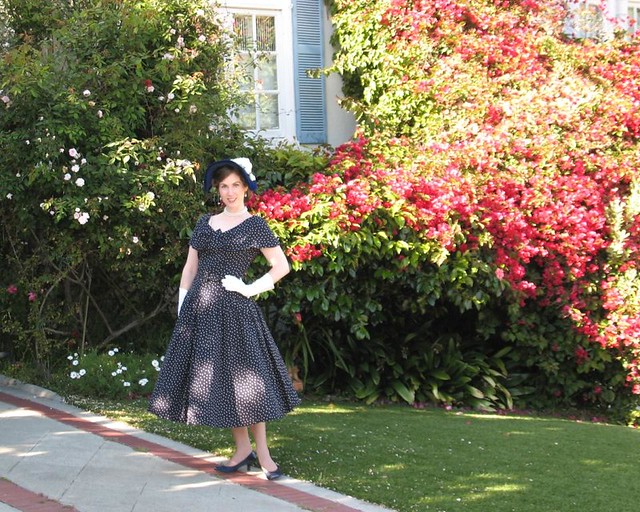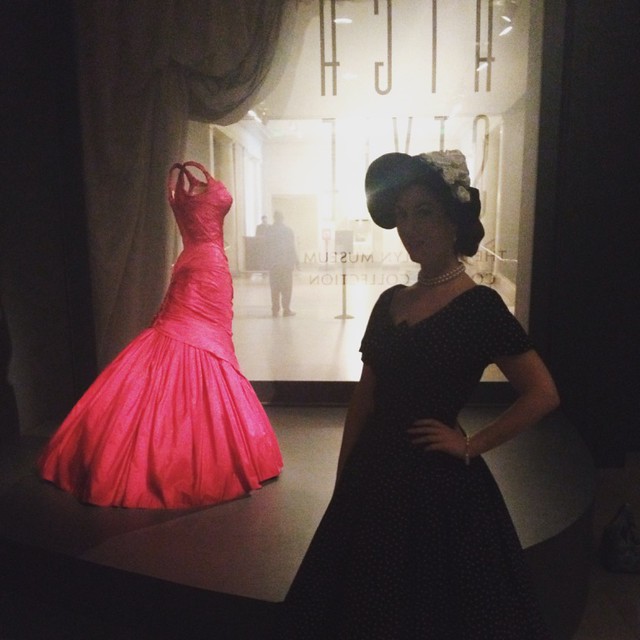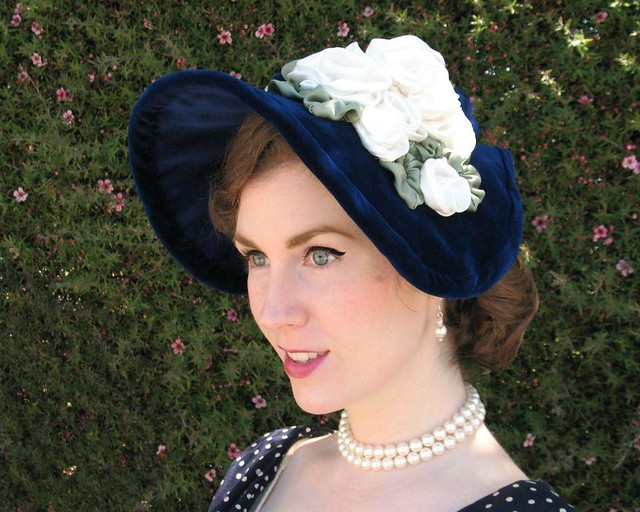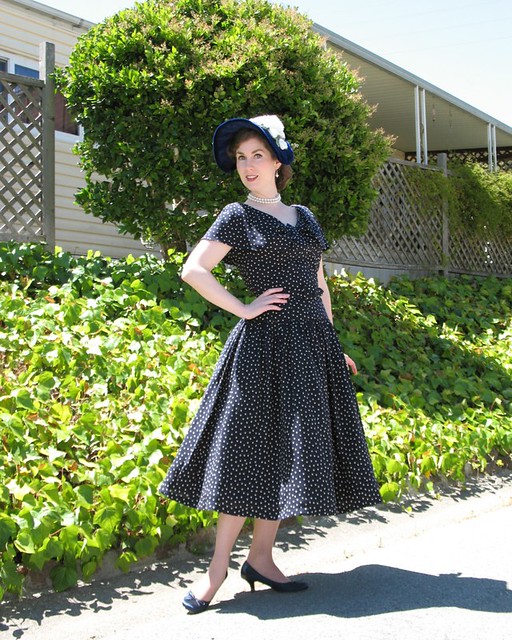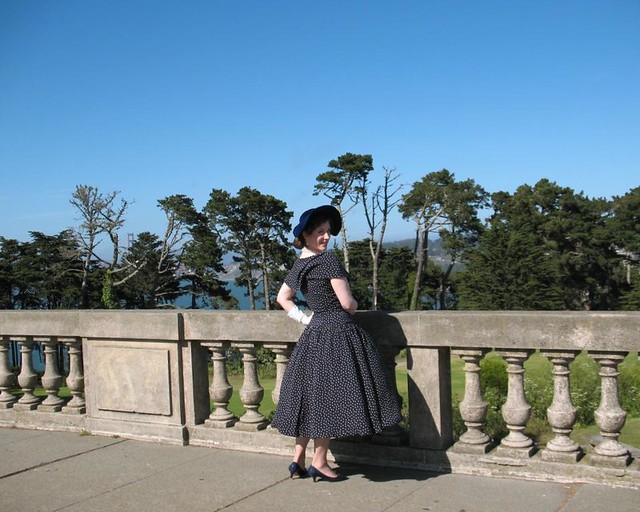I decided to try something a bit different for my latest sewing project. I noticed
this pattern on Burda's website a few weeks back - not something I would normally be drawn to, but the design stuck in my mind for days.
The problem was, I could not find the pattern on the site when I went to purchase the pattern. I searched "pleated back dress" to no avail.
Well, silly me, this is a “Gathered Back Dress.”
Say what?!
Is this some weird translation issue? Because there is no gathering in this entire
garment. Well, I suppose I used an ease
stitch to set my sleeve in place . . . but other than than, no gathering whatsoever. I think they need some help naming their patterns over at BurdaStyle!
For my underlining, I used black organza. Because of the dark wool fabric, I thought it might be easier to see white chalk lines when the two were layered together. It worked great!
Next came a lot of hand basting.
I have had some back luck with printed designs being slightly off grain, so this woven pattern was a nice change. It is really nice having a constant reminder of the grainline built right into the fabric!
Having worked with a similar fabric for
this project, I can say that the underlining was useful for more than just marking my stitching lines. The back of the wool is easily pulled by my standard presser foot when two layers of fabric are run through the machine. With the organza covering the loose threads, that problem was resolved.
The only real construction challenge was what to do about those pleats. The arrows on the pattern suggest that they be folded toward center back. This is not possible with the way the two center pleats are drafted, so I looked at the online version (the directions are no help). Turns out, they should be folded towards the side seam – which works so much better!
I debated removing the pockets because this dress is rather sack-like, and I did not want added bulk in the front half of the dress.
But since I was catch-stitching seam allowances in place, I figured I could just as easily catch-stitch the pockets to stay nice and flat.
Although not called for in the directions, I added a lining. Two of the pleats were removed by folding out the excess ease at the neckline, being careful to leave enough room through the hips as the silhouette narrows.
I suppose I could have redrafted the top to remove those pleats completely, but the bemberg rayon is lightweight, so any added bulk is really not that much of an issue.
The facing was under-stitched by hand, and the sleeve lining stitched into place.
And because of the extreme pegged hem, I made a facing for the skirt hem.
The only thing left to do is to make a couple of thread chains to anchor the lining to the hem facing and check for any stray basting threads!

